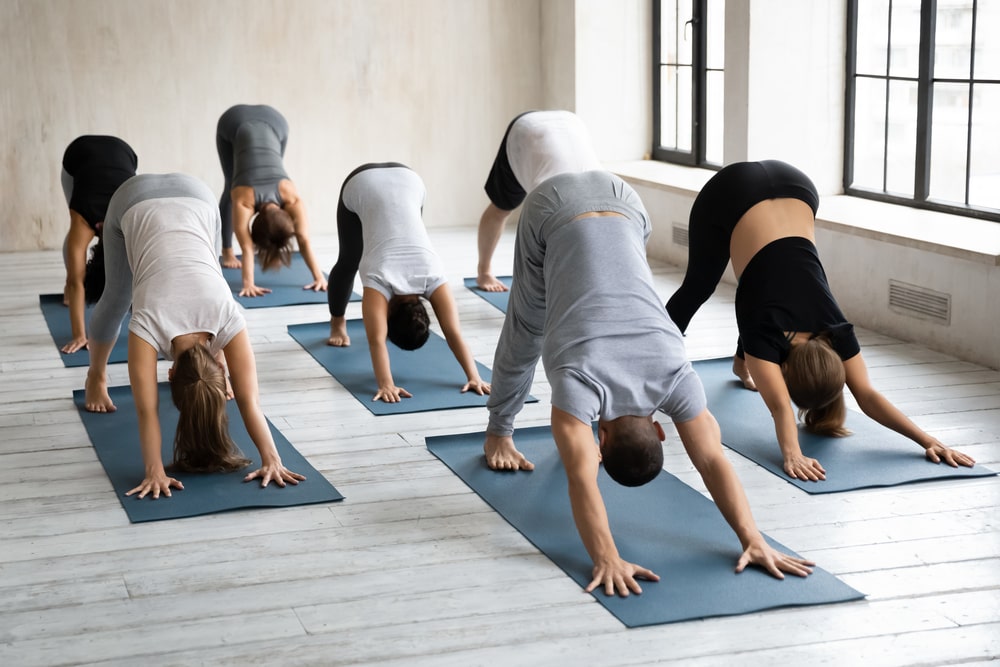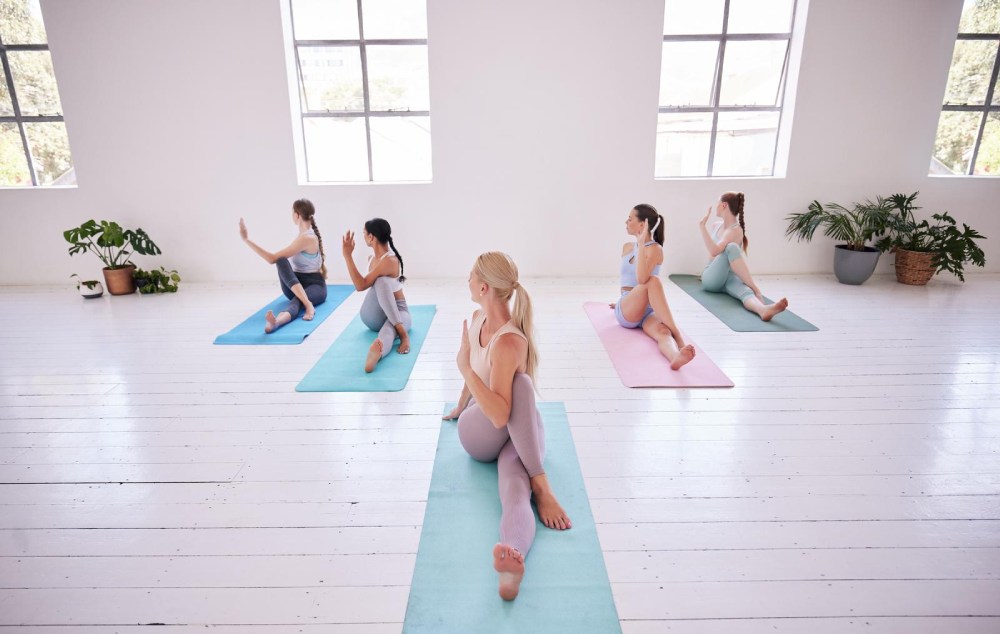These exceptional yoga studio design ideas will help you create a welcoming space for your yoga students.
The atmosphere and mood speak the loudest when it comes to yoga studio design. Yoga has been on the rise for ages, and membership prices keep skyrocketing. However, that doesn’t mean you have to create a top-notch, luxury yoga space full of bells and whistles to live up to the hype.
I can assure you that as long as you set a different vibe and tone for your studio, it will stand out from the crowd without eating up much of your setup cost. Here are the seven best yoga studio design ideas to make your brand voice heard.
Contents
1. Greenery
Wellness can be found in nature. Select some indoor plants, play around with dried pampas and grains, or go for a farmhouse theme.
Your students can benefit more from the sense of forest bathing without stepping further into the woods. Other than house plants, you can set up some floor-to-ceiling windows looking out to the garden or even a vertical living wall. Even though such meticulousness requires a high level of maintenance, watering, and adequate light, you will definitely set your yoga studio apart from the mainstream ones.
You might find our round-up of the best plants for a yoga studio helpful. You’ll also want to check out our yoga logo ideas to make your studio stand out.
2. Zen Cabana
This yoga studio design idea is on the higher end of the price spectrum, but it’s definitely a game changer if your studio is attached to a pool or looking out to the sea. Take your students to exercise in a Zen cabana flooded with fresh air and inspiration. Those essential factors to a mindful yoga routine, ironically, turn out to be a luxury in big cities.
Depending on where you live, a yoga cabana can be seasonal. However, you can switch it up to a year-round yoga shelter as long as you set up a decent fence or wrap all sides with floor-to-ceiling windows to avoid downpours and strong winds.
3. Set The Tone With A Soothing Paint Color

The idea behind a yoga studio is to relax, relax, and relax. The choice of your wall can completely change the atmosphere.
A soothing color with a beige undertone is a safe bet. If you like white, opt for Benjamin Linen White.
If you want to give your space a dramatic vibe, deep blue will fit the bill as it symbolizes wisdom, faith, and truth. Light gray can be a highlight, too, with its cool and balanced vibe symbolizing maturity and safety.
4. Incorporate Some Mood Lighting
Yoga studios are often dark and surrounded by walls. There might be a little window looking out to the high-rise buildings, leaving all work to a few soft lights or candles.
Turn on a small lamp similar to this decorative table lamp or one with a soft glow like a lantern-style floor lamp. I recommend opting for lamps that have several light settings or patterns to make your yoga studio more fun.
5. Eco-Friendly Design To Celebrate Minimalism
A yoga studio design like this will provide a tranquil space that will not distract from meditation.
Replace expensive materials with eco-friendly and natural items to promote the yoga philosophy. Swap fancy curtains with a large panel of natural linen cloth and let the LED backlighting run along the perimeter. Incorporate acoustic background music and let a lemongrass aroma diffuser give you a helping hand.
6. Ring In The ‘Ikigai’
In Japanese, Ikigai means reason for being. To design a yoga studio that’s steeped in pure Japanese philosophy, you must be able to connect and accommodate the well-being of the mind, body, and soul.
The primary idea behind such a holistic approach is the celebration of the minimal material palette and overall simplicity.
Breathe a new life into your studio with an art collection. This idea especially rings true if your students are high-end clients. It will connect them both conceptually and aesthetically with their love and passion for art and inner well-being.
The Ikigai design will be fully translated if you have a large studio that can be segregated into distinguished areas, including a reception, a tea room, a practice room, and a meditation zone.
The tea room can be part of the reception, where you set up a low table and seating units so your students or clients can engage in a meaningful chat before the class starts or when it’s over. Meanwhile, the meditation lounge can be a little smaller to target the emotional and spiritual self.
7. Hygge
Happiness and sustainable well-being are the core values to achieve through yoga. Incorporate texture into your studio design for a double shot of coziness. Provide your clients with some cozy meditation pillows, play it up with the floor and table lamps rather than overhead lighting, and spruce up the mood with the sound of rain drumming on the roof.
On top of that, don’t forget to encourage mutual connection between your students so they can share their enjoyment of yoga at the end of the class on an outdoor patio full of trees. Hygge will work best for slow-paced yoga classes such as Yin yoga, restorative yoga, Hatha yoga, and Kundalini yoga.



